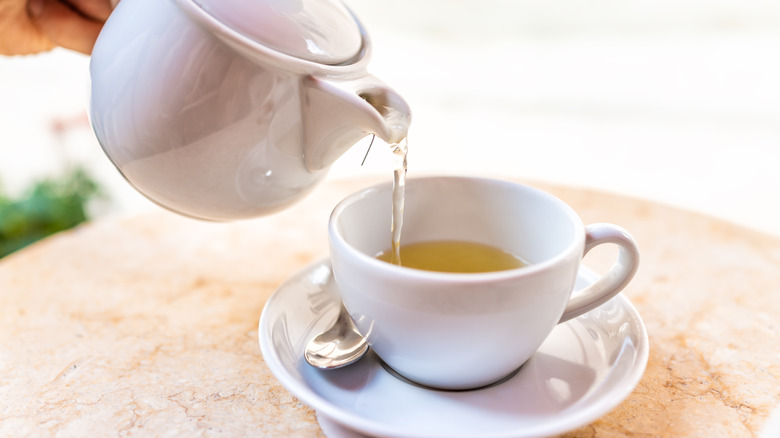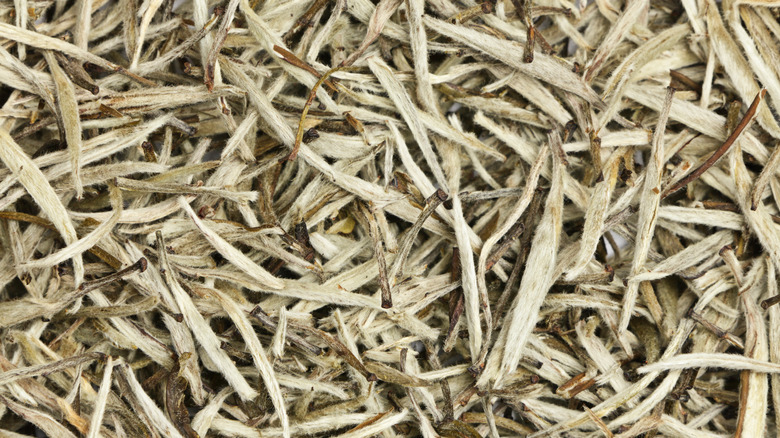The Brilliant White Tea Swap To Bring Dimension To Steamed Dishes
Here at Tasting Table, we love to root for an underdog. That's why we're talking about black, green, and herbal teas' perhaps lesser known (but still wicked delicious) relative: white tea. White tea comes from small, dried leaves of the Camellia sinensis plant, harvested young and typically grown in China's Fujian province. The "white tea" name comes both from the small, fuzzy, white hairs of the Camellia sinesis plant and from the light white-gold color that the leaves produce when steeped. White tea is characterized by its mild, delicate floral flavor, which stands in sharp contrast to bitter over-steeped black teas or sometimes-perfume-y greens.
Its signature flavor is so delicate that white tea is typically served unsweetened and should be brewed at a lower temperature than any other type of tea. For optimal flavor, use 2 tablespoons of dried leaves for every 6 ounces of water and steep for 1 to 5 minutes. Temperature-wise, it should be hot but not boiling; Somewhere between 160 and 180 degrees Fahrenheit is the sweet spot. Don't get it twisted, though — white tea isn't just for drinking. Its subtle yet impactful flavor can be a secret rockstar on the dinner table.
Once you have a freshly (and properly) brewed pot, here's how to put it to use in the kitchen.
Poach and steam your way to elevated entrees
When cooking with mild white tea, poaching and steaming are the names of the game. As a general rule, you can sub in steeped white tea anywhere you would use stock, broth, or water. Steam a batch of soft pork buns in white tea — or, use the tea alongside black vinegar as the liquid components in soup dumplings. Try poaching a fish in it. White tea would work especially well for poaching branzino filets in this recipe with yuzu sauce and grated cucumber for a Chinese-inspired flavor palate. Steam some fresh eggplant and zucchini slices in white tea for a knockout side dish. If you're feeling ambitious you could even steam some crab legs in white tea.
To take your soups to an earthy new level, use white tea instead of vegetable stock. Submerge your next tortellini en brodo in a white tea broth, or use it to cook rice or couscous. For the caffeine-conscious, rest assured — white tea has a much lower caffeine content than black and green teas, closer to a non-caffeinated herbal tea, so you won't get a buzz off your meal. Plus, as Healthline states, it's rich in antioxidants and promotes heart health, clear skin, and strong bones and teeth. For a slightly-floral steamed dish that'll leave dinner guests hungry for more and wondering "What was that ... spice?" whip out a tea bag or two. (Your body just might thank you, too.)

